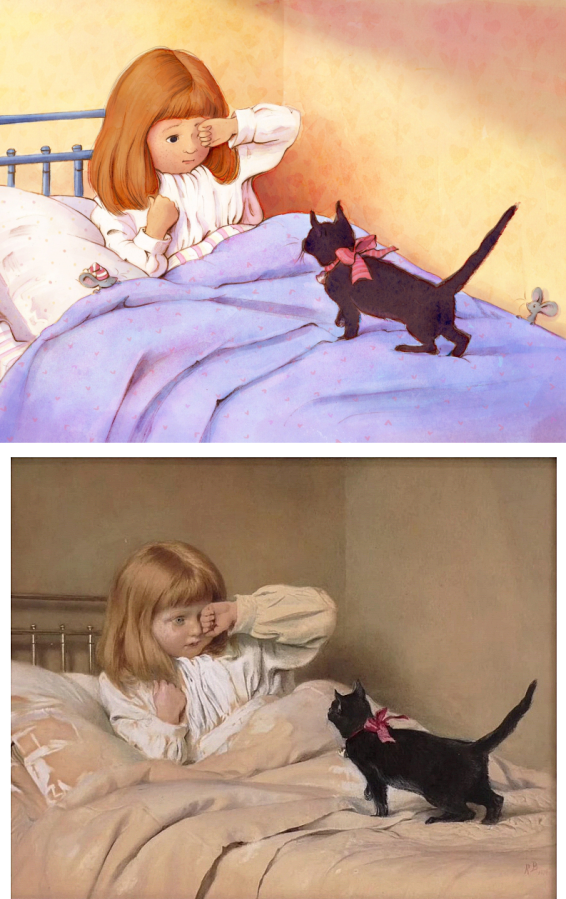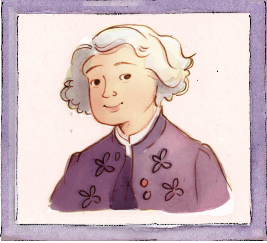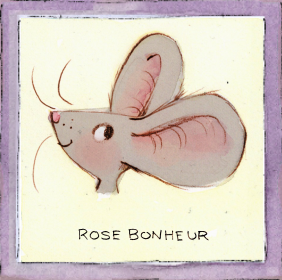

size of the original painting: 13.25 inches x 16.5 inches
Consider this: One day—way back in the 1880s—a little girl from Paris woke up. Do you think the cat awoke her with its little bell? Is it cold outside? What can the girl see outside her window? Does she live in the city or the country? Are breakfast smells wafting from the kitchen into the bedroom? Who is waiting on the other side of the door? Does she have siblings? friends? Do you think the girl and cat are good friends? What do you think they will do today?
So many things to think about!
Notice how Bonheur paints everything almost like a photograph. We see every fold in the girl’s nightgown, shadows on the wall, freckles on her face, and the shine of her hair and on the cat’s bell. When an artist paints objects the way we see them in real life, this is called representational art.
Meet the Artist:

Before she could talk, Rosa Bonheur sketched for hours with a pencil and paper. But she hated school. Reading and writing were such a challenge that Rosa’s mom taught her how to read and write by drawing animals for each letter. But still, Rosa struggled. When school and a sewing apprenticeship were just too much, Bonheur’s artist dad taught her how to paint—and Rosa was amazing! Her dad brought live animals into the studio just so Rosa could study them. (Can you guess what she loved to paint most of all?)
Fun facts about Bonheur:
• People started paying money for Rosa’s paintings when she was 12 years old.
• Rosa’s family was very artistic: her dad and siblings all painted. Her mom? She played the piano.
• As an adult, Rosa lived in a chateau—a small castle home. She owned a lion and lioness, a stag, a wild sheep, a gazelle, and horses.

Where in the world: France
